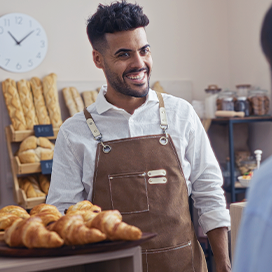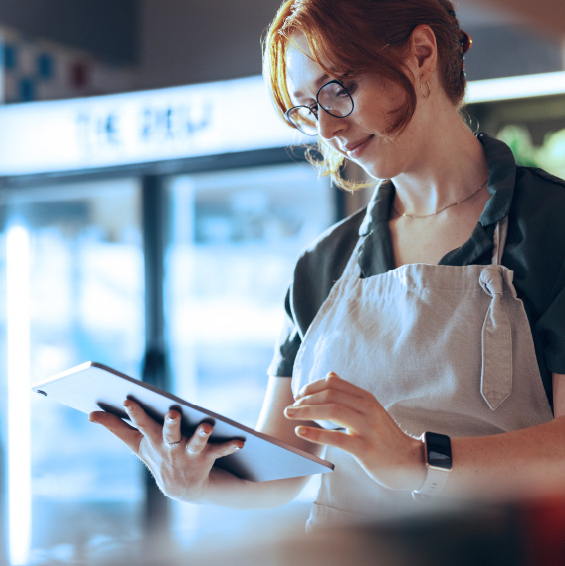
Just Good Business Podcast: Small business & charity: How communities support Ronald McDonald House
Al is joined by Kate Horton from Ronald McDonald House Canada.

Running a small retail store means wearing many hats. Between managing inventory, keeping track of sales, and helping customers, your hands are full every day. If you’re still using a cash register or manually entering sales into a spreadsheet, it’s time to consider upgrading to a Point of Sale (POS) system.
This guide is designed specifically for small and micro retailers who have a single location. Whether you’re selling clothing, home goods, gifts, or specialty products, this blog will help you understand why a POS system is not just helpful, but essential. We’ll walk you through what to look for so you can choose a POS that actually works for you, your store, and your customers.
Let’s start with the basics. A POS system is more than just a machine that takes payments. It’s the central hub for your retail operations. A good POS system helps you:
Track what’s selling and what’s not
Understand your store’s performance over time
Manage your inventory more efficiently
Offer better service to your customers
Train and manage staff with ease
Handle returns and promotions in a few clicks
If you’ve ever lost track of inventory, struggled with manual end-of-day reports, or found it difficult to manage sales during a pop-up event, a POS system can take those headaches off your plate.
Let’s dive into the specific features you should look for when choosing the right POS system for your small retail store.
One of the biggest advantages of using a POS system is the ability to track your store’s performance. Instead of guessing how your business is doing, you can view real-time data like:
Total sales by day, week, or month
Top-selling products
Peak sales hours
Compare performance over time
Spot trends and seasonal changes
Having this kind of data on hand allows you to make smarter decisions about inventory, staffing, and promotions. It also helps you plan better for busy seasons and slow months. Instead of crunching numbers manually, you can rely on your POS system to do the heavy lifting for you.
Tired of manual inventory counts? A smart POS system keeps track of your inventory in real time. It updates every time a sale is made and gives you access to reports that show:
What’s in stock
What’s running low
What hasn’t sold in weeks
Reorder points for each product
This means fewer stockouts, less over-ordering, and more money in your pocket.
If your store attends local markets, community events, or pop-up shops, portability matters. Look for a wireless POS system that can go wherever your store goes. This allows you to:
Accept payments at outdoor or off-site events
Track sales from your main location and pop-ups in one system
Avoid manual data entry after the event
With a portable POS, your store is no longer tied to the counter.
Your customers are more than just transactions. A good POS system lets you build customer profiles that include:
Name and contact information
Order history
Preferred products
This helps you provide a more personalized shopping experience. You can also use this data to send promotions, offer loyalty rewards, or reach out to regulars when a product they love is back in stock.
Not everyone on your team needs access to everything. The right POS system allows you to set user permissions for different roles. For example:
Admin access for owners and managers
High-level access for supervisors
Limited access for seasonal or new staff
This protects sensitive information, limits mistakes, and ensures that staff can only access the tools they need to do their jobs well.
Returns are part of retail life. A POS system can make the process smoother for both you and your customer. With the right setup, you can:
Process refunds directly from the original transaction
Keep records of returns for future reference
Update inventory automatically
No need to fumble with paperwork or issue store credits by hand. A few taps and you’re done.
Running a sale? Offering a customer appreciation discount? Your POS should make it easy to apply deals at checkout. You can:
Set up discounts ahead of time
Apply percentage or dollar-off deals
Run time-limited promotions
This helps you attract customers, increase sales, and learn what kinds of offers work best.
Not all POS systems are designed with micro retailers in mind. Look for one that is:
Easy to set up and use
Cloud-based so you can access data from anywhere
Affordable with pricing that fits a small business budget
Built for retail, not restaurants or services
Choosing the right POS system can help your store run smoother, save you time, and improve your customers’ experience. Ready to level up? Check out Moneris Go Retail.

Al is joined by Kate Horton from Ronald McDonald House Canada.

Learn how seamless payments, loyalty programs and personalized service can turn first-timers into regulars.

Learn why a POS system is essential for small quick service restaurants and which features help streamline orders, boost sales, and keep your café running smoothly.

Discover the best POS systems for small retail businesses. Learn how to streamline inventory, boost sales, and improve customer service with the right POS solution.